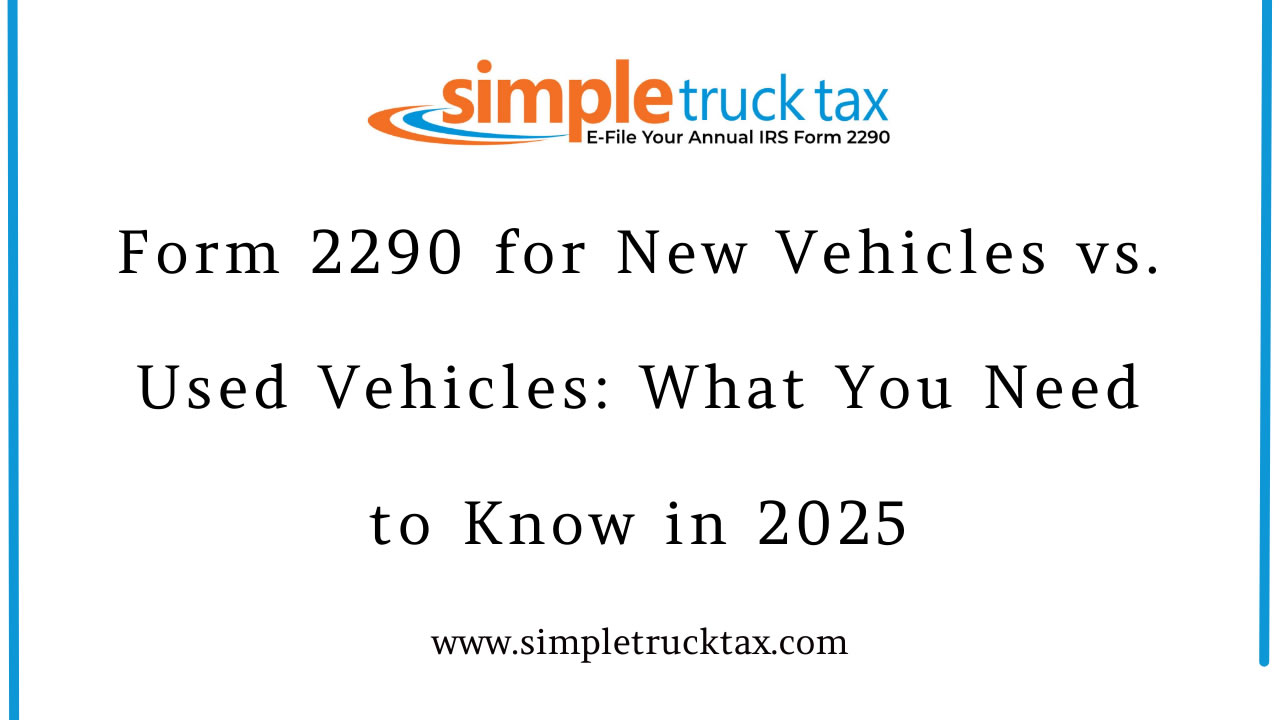
Form 2290 for New Vehicles vs. Used Vehicles: What You Need to Know in 2025
As a reliable service provider for e-filing Form 2290, we understand how complex heavy truck taxes can be, especially when differentiating between the outright purchase of a new versus a used truck. Knowledge of some intricacies here is essential for filing Form 2290 for vehicles in service in 2025, as it relates to smooth tax compliance and evading penalization.
2290 for New Vehicles: The "First Use" Rule
For new heavy vehicle acquisitions, the Form 2290 is triggered beginning with the vehicle's "first operational month" on public highways. Unlike the standard tax year, HVUT on new vehicles is pro-rated; therefore, one pays only for the months remaining in the current tax year, from July 1 to June 30. For example, if a new rig hit the road in October, that represents the first month of tax assessment, and Form 2290 was due by November 30.
Remember that this tax obligation must be fulfilled in order not to affect your new heavy vehicle purchase in tax compliance from the very first day. Our system automatically prorates the HVUT so you can easily submit this online.
Form 2290 for Used Vehicles: The Standard Tax Year
For most used heavy vehicles already in operation, the Form 2290 follows the standard annual HVUT cycle-the tax year is always from July 1 and the IRS filing deadline is set upon existing vehicles around August 31 every year. However, if you buy a used vehicle mid-year that has been taxed by the previous owner for the current tax reporting period, you typically will not owe tax until the next July 1.
This is subject to the exception that if the vehicle was before sold to you by the previous owner, effective up to tax payment for the current year, set by you on its first use, similar to any new vehicle.
Simplifying Your HVUT Filings for 2025
Whether it's filing for a heavy vehicle recently acquired or annual HVUT for the fleet, understanding the distinction is very important. E-filing with SimpleTruckTax.com provides instant Schedule 1 proof of payment required for vehicle registration. The system walks you through this, simplifying tax compliance for both new and used vehicles-error-free. Get confirmation from the IRS quickly and keep the fleet going.